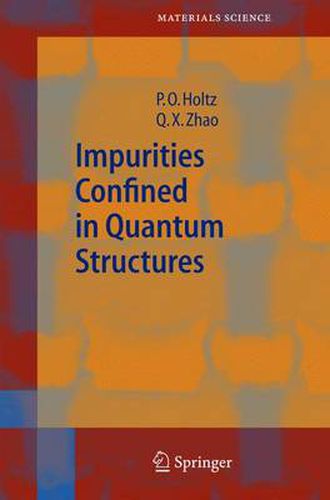Readings Newsletter
Become a Readings Member to make your shopping experience even easier.
Sign in or sign up for free!
You’re not far away from qualifying for FREE standard shipping within Australia
You’ve qualified for FREE standard shipping within Australia
The cart is loading…






This title is printed to order. This book may have been self-published. If so, we cannot guarantee the quality of the content. In the main most books will have gone through the editing process however some may not. We therefore suggest that you be aware of this before ordering this book. If in doubt check either the author or publisher’s details as we are unable to accept any returns unless they are faulty. Please contact us if you have any questions.
The dramatic impact of low dimensional semiconductor structures on c- rent and future device applications cannot be overstated. Research over the last decade has highlighted the use of quantum engineering to achieve p- viously unknown limits for device performance in research laboratories. The modi?ed electronic structure of semiconductor quantum structures results in transport and optical properties, which di?er from those of constituent bulk materials. The possibility to tailor properties, such as bandgap, strain, band o?set etc. , of two-dimensional (2D) semiconductors, e. g. quantum wells, for speci?c purposes has had an extensive impact on the electronics, which has resulted in a dramatic renewal process. For instance, 2D structures are today used in a large number of high speed electronics and optoelectronic appli- tions (e. g. detectors, light emitting diodes, modulators, switches and lasers) and in daily life, in e. g. LED-based tra?c lights, CD-players, cash registers. The introduction of impurities, also in very small concentrations, in a semiconductor can change its optical and electrical properties entirely. This attribute of the semiconductor is utilized in the manifoldness of their app- cations. This fact constitutes the principal driving force for investigation of the properties of the impurities in semiconductors. While the impurities in bulk materials have been investigated for a long time, and their properties are fairly well established by now, the corresponding studies of impurities in quantum wells is a more recent research area.
$9.00 standard shipping within Australia
FREE standard shipping within Australia for orders over $100.00
Express & International shipping calculated at checkout
Stock availability can be subject to change without notice. We recommend calling the shop or contacting our online team to check availability of low stock items. Please see our Shopping Online page for more details.
This title is printed to order. This book may have been self-published. If so, we cannot guarantee the quality of the content. In the main most books will have gone through the editing process however some may not. We therefore suggest that you be aware of this before ordering this book. If in doubt check either the author or publisher’s details as we are unable to accept any returns unless they are faulty. Please contact us if you have any questions.
The dramatic impact of low dimensional semiconductor structures on c- rent and future device applications cannot be overstated. Research over the last decade has highlighted the use of quantum engineering to achieve p- viously unknown limits for device performance in research laboratories. The modi?ed electronic structure of semiconductor quantum structures results in transport and optical properties, which di?er from those of constituent bulk materials. The possibility to tailor properties, such as bandgap, strain, band o?set etc. , of two-dimensional (2D) semiconductors, e. g. quantum wells, for speci?c purposes has had an extensive impact on the electronics, which has resulted in a dramatic renewal process. For instance, 2D structures are today used in a large number of high speed electronics and optoelectronic appli- tions (e. g. detectors, light emitting diodes, modulators, switches and lasers) and in daily life, in e. g. LED-based tra?c lights, CD-players, cash registers. The introduction of impurities, also in very small concentrations, in a semiconductor can change its optical and electrical properties entirely. This attribute of the semiconductor is utilized in the manifoldness of their app- cations. This fact constitutes the principal driving force for investigation of the properties of the impurities in semiconductors. While the impurities in bulk materials have been investigated for a long time, and their properties are fairly well established by now, the corresponding studies of impurities in quantum wells is a more recent research area.